
Planting giant sunflowers
When and how to plant giant sunflowers?
Contents
Sunflower is a stunning large annual flower that is very easy to grow. Its rapid and spectacular growth is highly rewarding, especially for novice gardeners. Giant sunflowers are the most surprising and majestic, as they can reach 4 m in height at ripeness. Melliferous, they attract bees, bumblebees, and other garden helpers. The uniqueness and originality of young plants is that they turn to follow the light, which has earned them the nickname sun seed or garden sun. Discover all our tips for successfully growing giant sunflowers in the garden.

Sunflower: sunny, cheerful, and much loved by birds
Where and when to plant giant sunflower seeds?
Giant sunflowers have a very rapid growth rate but are sensitive to cold. We will sow the sun seeds in buckets in a cold greenhouse from mid-April, and from mid-May in open ground as soon as the risk of frost has passed.
To successfully grow sunflowers, it is important to choose a location in full sun. Sunflowers prefer rich, fertile soil that is well-drained. Indeed, the sunflower enjoys cool soil but fears excess moisture.
Which giant sunflower seeds to choose?
Here is our selection of the largest and most impressive sunflowers:

Giant Sunflower Seeds - Helianthus annuus Uniflorus Giganteus
- Flowering time August to November
- Height at maturity 2,50 m

Sunflower Earthwalker Seeds - Helianthus annuus
- Flowering time August to October
- Height at maturity 2,70 m

Giant BIO Sunflower Seeds - Helianthus annuus
- Flowering time August to October
- Height at maturity 3,50 m

Sunflower Russian Giant Seeds - Helianthus annuus
- Flowering time August to October
- Height at maturity 3 m

Giant Sunflower Kong F1 Seeds - Helianthus annuus
- Flowering time August to November
- Height at maturity 4 m
Discover also our various sunflower varieties with different heights and colours!
Discover other Sunflower seeds
View all →Available in 1 sizes
Available in 1 sizes
Available in 1 sizes
Available in 1 sizes
Available in 1 sizes
Available in 1 sizes
Available in 1 sizes
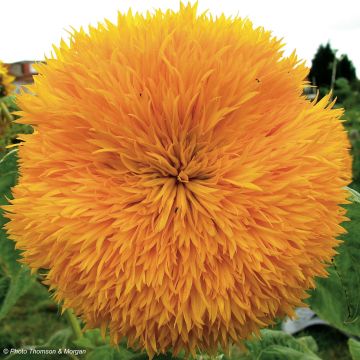
Available in 1 sizes
Available in 1 sizes
Available in 1 sizes
How to sow giant sunflower seeds?
- Loosen the soil to a depth of 20 cm using a garden fork or a spade and a rake;
- Set up a string line to mark the sowing line;
- Using a hoe, create a furrow 3 cm deep;
- Water the bottom of the furrow generously;
- Sow your seeds in groups of 2 every 40 cm (it is also possible to sow in trays and plant in the garden when the seedlings have 3-4 leaves);
- Cover with soil and firm it down to ensure good contact between the seed and the soil;
- Water again;
- Keep the soil slightly moist until germination. You can cover the soil with a very light mulch to prevent it from drying out quickly;
- After 20 days, if both seeds have germinated, remove the weaker one to leave only one plant.
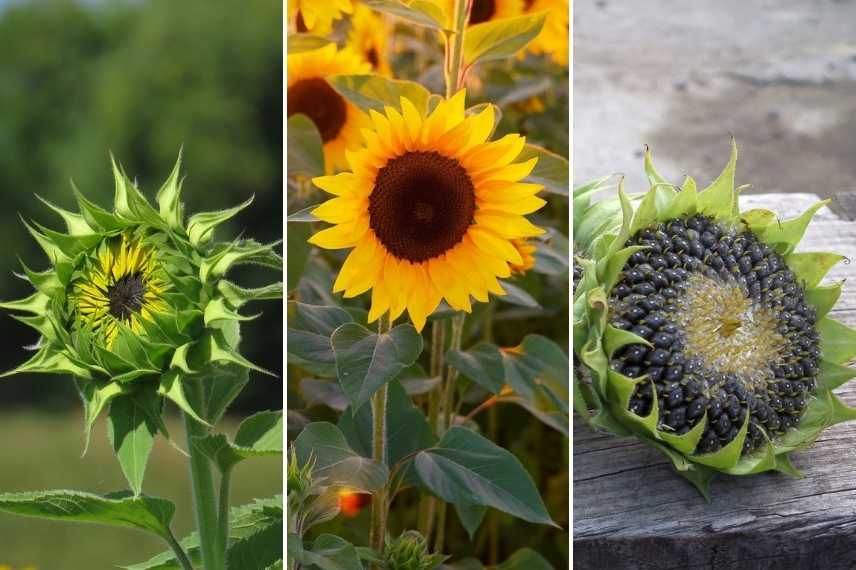
The evolution of a sunflower flower
Read also
10 Easy Annual Flowers to SowGrowth and care of giant sunflowers
- Slugs and snails love young sunflower shoots. Therefore, you should keep a close eye on them until the young plant is robust enough, generally when it reaches 10 cm in height. You can, for example, use natural slug pellets based on ferramol.
- As soon as the soil is dry on the surface, water moderately to keep the soil cool without excess. Sunflowers are sensitive to drought, but also to excess moisture. To maintain cool soil and space out watering, you can add mulch (up to 20 cm thick) once the young plant exceeds 30 cm in height.
- You can plant ground cover plants at the base of your giant sunflowers, such as sages, rudbeckias, carnations, lettuces, or cabbages. You can also introduce some climbing plants that will climb the stems, such as ipomoeas or even squashes or cucumbers. These last two associations will require you to stake your sunflowers.
- Giant sunflowers are sensitive to wind and storms. We recommend staking them to prevent them from falling over.
- In September, your sunflower will produce seeds that you can offer to birds during winter or to your poultry.
- As the sunflower is an annual plant, you can remove it once it has faded. You can also break the stems and leave them on the ground to create natural shelters for garden insects during winter. They can also be used to make insect hotels.
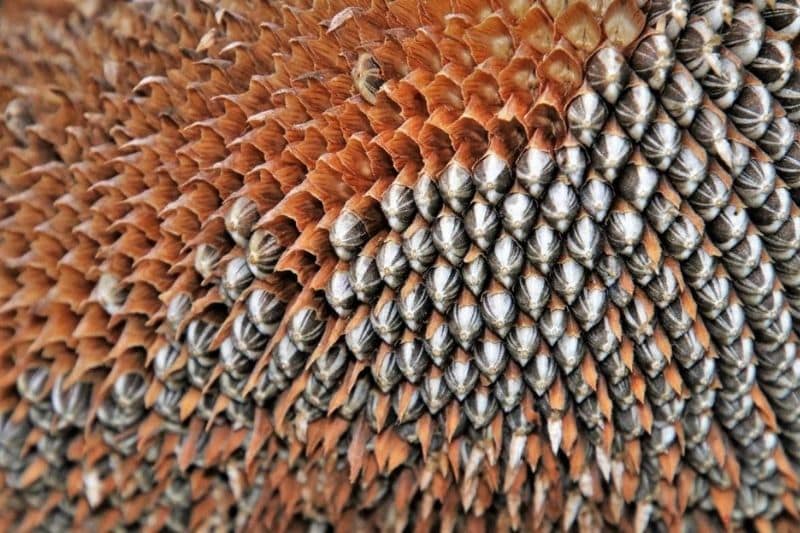
Sunflower seeds
To go further:
- Discover all our varieties of sunflower seeds
- Are slugs eating your beautiful sunflowers? Here are 7 ways to fight effectively and naturally.
- To learn everything: Sunflower: sowing, planting, care
- Subscribe!
- Contents
































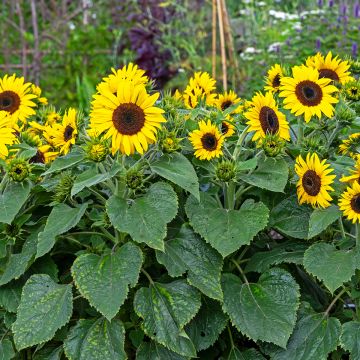


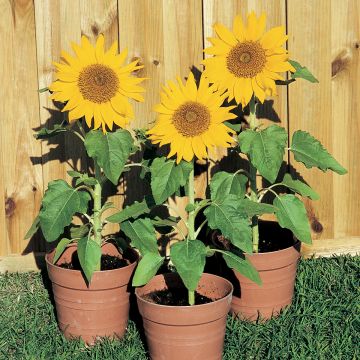

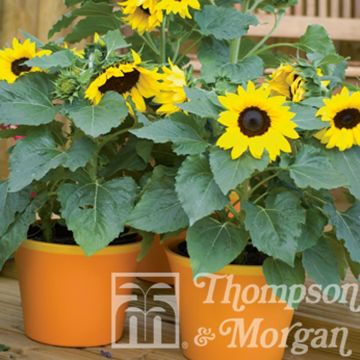


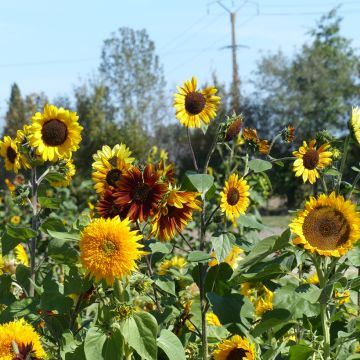
Comments